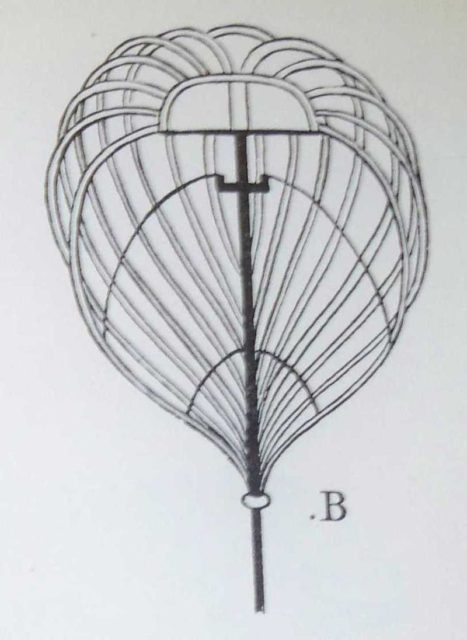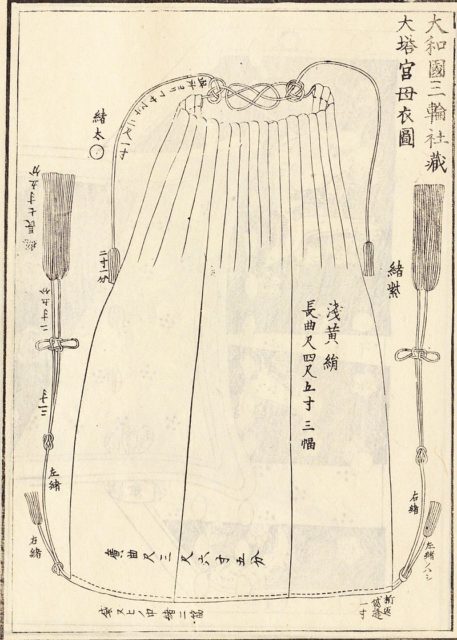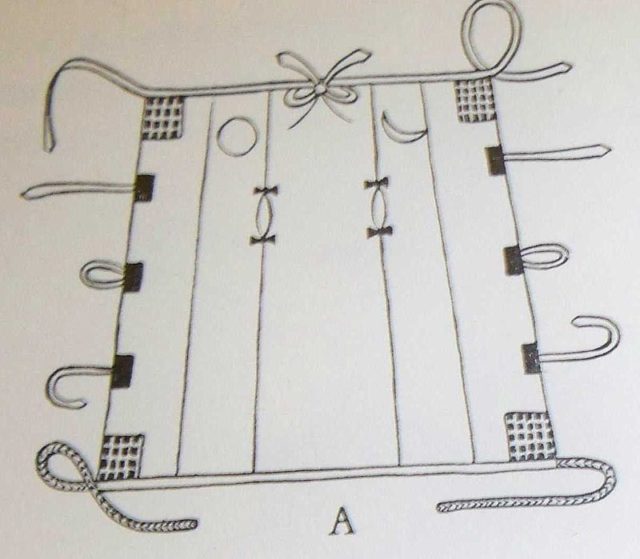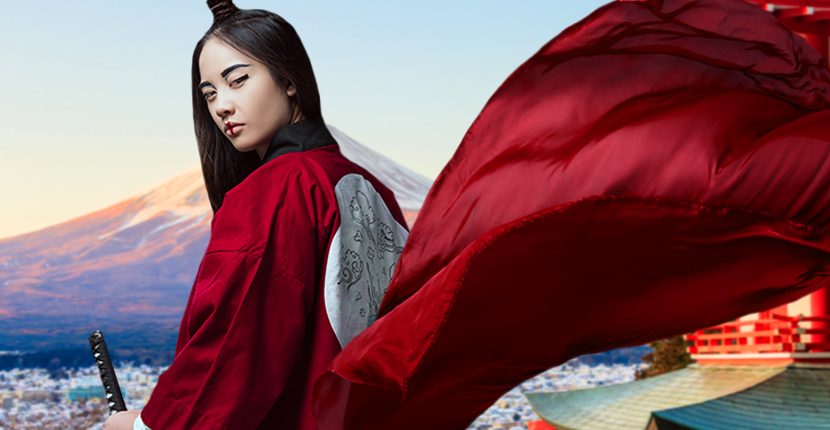The armor of ancient Japanese soldiers was as useful as it was elaborate. Ornate helmets, clan badges, and other unique accouterments were popular for both bushi, the paid elite warriors who served the Emperor or Shogun, and samurai, the warriors whose entire lives were pledged to the Shogun. The difference between the two types of soldiers was mostly socio-economic, with the samurai at the top of the scale and bushi as second, but still highly ranked in society.

One unusual addition to Japanese armor was the horo, worn by mounted bushi as early as the Kamakura period of 1185–1333. It was a silk cloak-type garment, usually attached to the back of the helmet and the waist; it caught the wind as the horse ran, and would fill with air like a balloon to form a buffer between the cloth and the soldier’s back.
A horo was usually around 6 feet long and made from several strips of silk cloth, woven together and adorned with the warrior’s crest.
The silk was strong enough to force arrows to bounce off, keeping the warrior from harm. If the points did penetrate, they would simply fall into the open space. Soon, soldiers improved the horos by stuffing them with light fabrics. A more permanent solution, invented by Hatakeyama Kayama Masanaga during the Ōnin War in 1467-1477, was a framework made of whalebone ribs, known as an oikago, which was used to keep the horo inflated. More elaborate horos also extended to the front to cover the head of the horse. They could look somewhat comical as if the rider had an enormous pumpkin behind him.


The horo also had mystical connotations. It was worn to keep evil forces from conspiring against the bushi’s mission. Bushi were encouraged to wear the horo in battle. If a warrior died in battle, according to the diary of Japanese poet Hosokawa Yusai, it was the responsibility of the victorious soldier to use the defeated soldier’s horo to wrap up his decapitated head.
This would enable identification of the body by the embroidered crest, and confirm his station in life so his body would be treated accordingly.


When a mounted warrior could no longer fight and knew he would succumb on the battlefield, he cut the cord from his helmet and fastened the cord of his horo to the hook on his helmet. This showed that the warrior would no longer fight.
Read another story from us: Ancient warrior king found wrapped in a golden cloak
The samurai era came to an end in the last half of the 19th century with the end of the Edo Shogunate which lasted from The Battle of Sekigahara (1600) to the Meiji Restoration (1867). The emperor took back political control over the Shogun and the capital was moved to Tokyo from Kyoto.
With the advent of gunpowder and modern warfare techniques, the horo was no longer functional as bullets could pierce through them quite easily. They are now seen mostly on statues and in museums and symbolize a time and place when the battlefield was a much different place and weapons and body armor reflected that, and reflected arrows.
